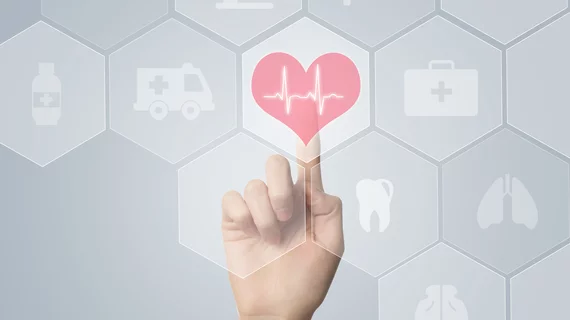Leadless devices reduce infections in pacemaker-dependent patients
Leadless pacemakers are a viable alternative to conventional pacemakers in patients with a history of device infection and lead extraction, researchers reported in the January edition of Heart Rhythm.
The majority of heart patients tolerate conventional pacemakers (PMs) well, Niek E.G. Beurskens, MD, and colleagues at the University of Amsterdam wrote in the journal, but device infections are on the rise due to an ever-expanding list of indications for PMs and a growing number of revision procedures that are associated with a two- to five-fold increased risk of infection.
“PM infections have become a major concern in device management since they are associated with high rates of morbidity and mortality,” Beurskens and co-authors wrote.
In the case of a device infection today, the typical physician will extract all pacemaker hardware to reduce a patient’s risk of infective endocarditis and severe systemic infection, the authors said. Still, the patient is required to wait until they’ve fully recovered from that infection before they can undergo another implantation, and the wait can be difficult for patients who are PM-dependent or have a history of recurrent infections.
One route for those individuals could be a transvenous temporary pacing system, which can serve as a bridge until the patient can undergo implantation with a new pacemaker. But that approach requires bed rest and has been linked to system infection, sepsis, cardiac perforation and delirium.
Beursken et al. proposed an alternative to those risks—leadless pacemakers (LPs).
“The novel LP technology may provide new opportunities for the management of PM infections, specifically in these challenging cases,” they wrote. “Intracardiac implantation of the LP without the use of leads, a pectoral pulse generator or a temporary PM potentially reduces the risk of recurrent infection.”
The team tested the utility of LPs in a group of 17 patients who received an LP after undergoing conventional PM lead extraction due to infection. Nine patients received a temporary transvenous pacing system as a bridge to permanent LP implantation, six received early LP implantation within a week of their extraction and the remaining two received an LP a week or more after their extraction.
During a mean follow-up of 16 months, the researchers said no patients experienced infection, including seven patients with a history of recurrent device infections. Beursken and colleagues said they can’t discount LP infection down the road, but echocardiograms, blood cultures and clinical symptoms pointed to a clean bill of health in all 17 patients.
“In theory, the occurrence of LP encapsulation may decrease the risk of device infection in the long-term since the device is sealed off from bacteria,” they wrote. “In contrast, one may argue that reduced blood circulation in fibrotic tissue may enhance bacterial colonization.”
The authors said all patients who were implanted with an LP were discharged within three days of the procedure, confirming that early implantation could be a safe alternative.
“This strategy, especially when using early LP implantation, has the potential to improve the economical and logistic burden associated with device infections and extractions by shortening hospital admissions,” they said. “Prospective randomized data on LP therapy in the management of device infections are required to determine whether our suggested strategy contributes to more effective treatment strategies and better outcome.”

